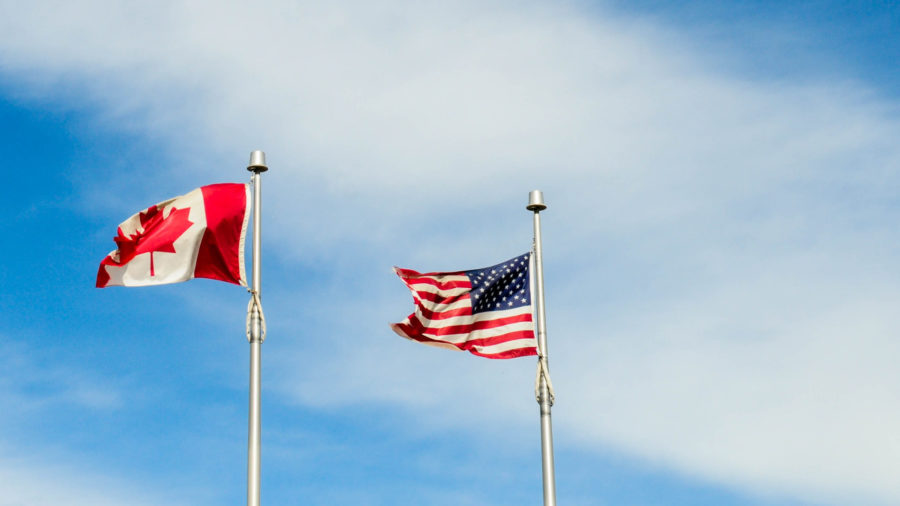July 6, 2020
Reopening the Canada-U.S. Border Will be a Long, Piecemeal Process

With the United States adding 40,000 new cases of COVID-19 each day, the European Union is leaving the U.S. off a list of 15 countries whose citizens soon will be allowed to visit its 27 member nations. In Canada, there seems to be no great desire to quickly reverse the unprecedented border restrictions that were imposed in March.
The question for Canadians is how much longer the virtual wall will have to be in place — and how much it might hurt to keep it there.
“My guess is it’s going to have to stay closed for more than 12 months,” Colin Furness, an epidemiologist at the University of Toronto, told CBC News this week. “It’s hard to imagine what’s going to happen in the United States until we have a vaccine or until the population has been sufficiently infected that you have herd immunity.”
When Leger Marketing asked Canadians in May when they thought Canada should reopen its border with the United States, 47 per cent of respondents said “not before the end of the year.” With more than 2.6 million cases now in the United States, it’s unlikely Canadians’ enthusiasm for welcoming our American neighbours has increased since then.
An exemption for “essential” travel significantly reduced the disruption to the Canadian economy. “Canadians continue to get the food, medicine, commercial goods, and other essential supplies they need to live and work, and Canadian exporters for the most part have not suffered disruption,” said Goldy Hyder, president and CEO of the Business Council of Canada.
But the decline in traffic across the border has still been precipitous. According to data obtained by Postmedia, between June 15 and June 21 just 170,998 people entered Canada at a land crossing with the United States — and 104,247 of those people were truck drivers. Over the same period in 2019, more than 1.2 million people traveled through a land crossing from the U.S. into Canada.
Based on those numbers, the pandemic is going to leave a deep mark on the Canadian tourism industry and on border towns like Windsor and Sarnia, Ontario. Hyder and the Business Council have called on the federal government to extend its wage subsidy for the tourism sector through the rest of the year.
But it can’t be assumed that the exemption for essential business travel and widespread use of video conferencing are preventing all damage to the economic relationships between Canadians and Americans.
“People say, okay, well, the trucks are going, so the supply chains are working. But the supply chains reflect agreements and contracts that were made in the past with a lot of face-to-face interaction,” said Bill Anderson, director of the Cross-Border Institute in Windsor. “If those agreements aren’t being made now, the question is — what’s the supply chain going to look like six months to a year from now?”
But all complications associated with the current restrictions must be balanced against the significant health risks of reopening the border — and the economic disruption that would occur if there is a resurgence of COVID-19 in Canada.
The border restrictions put in place in March have been extended three times and are now set to expire on July 21 — officially, at least. Even if the deal is only extended for another month, it’s likely time to accept that a largely closed border between Canada and the United States is, like the disease itself, going to be our reality for the foreseeable future — and to plan accordingly.
(Source: CBC)